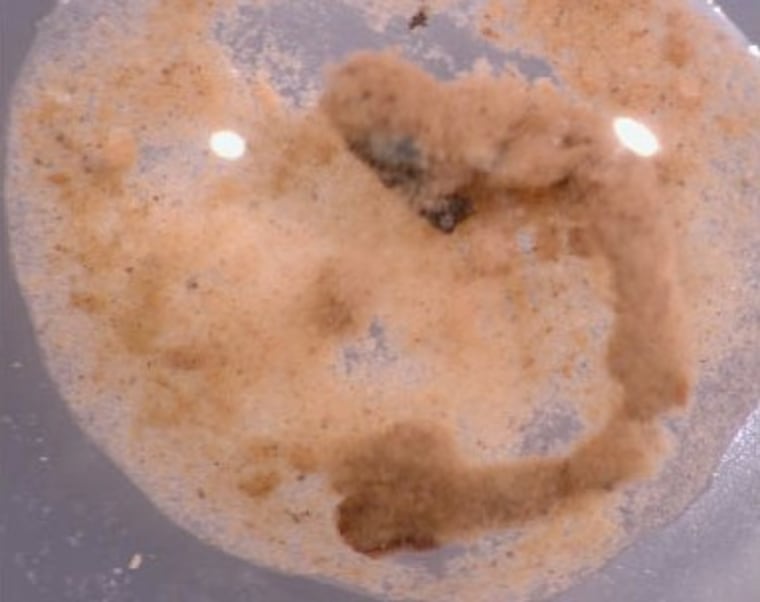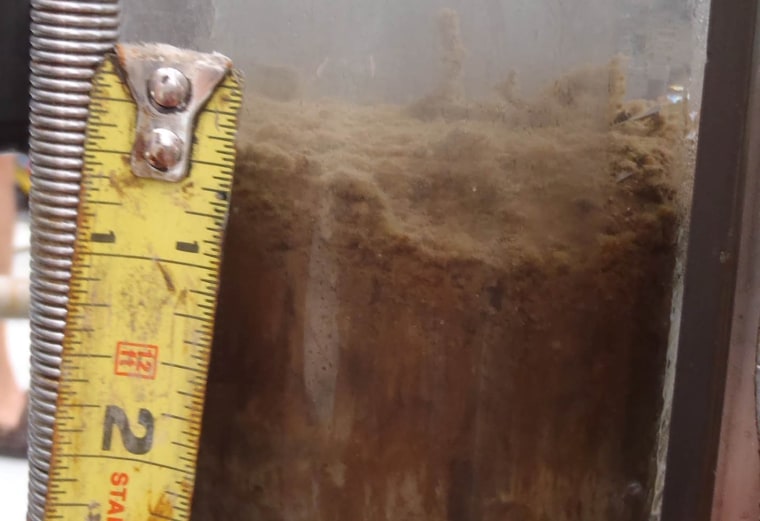Samples taken from the seafloor near BP's blown-out wellhead indicate miles of murky, oily residue sitting atop hard sediment. Moreover, inside that residue are dead shrimp, zooplankton, worms and other invertebrates.
"I expected to find oil on the sea floor," Samantha Joye, a University of Georgia marine sciences professor, said Monday morning in a ship-to-shore telephone interview. "I did not expect to find this much. I didn't expect to find layers two inches thick."
The scientists aboard the research vessel Oceanus suspect it's all from the BP spill, but will have to wait until they return to shore this week to confirm it's the same oil source.
"It has to be a recent event," Joye said. "There's still pieces of warm bodies there."
If it is BP oil, it could undermine the federal government's estimate that 75 percent of the spill either evaporated, was cleaned up or was consumed by natural microbes.
What the scientists do already know is that the oil is not coming naturally from below the surface.
"What we found today is not a natural seep," Joye wrote in her blog on Sept. 5 when the first surprise sediment was found.
"The near shore sediments contained grayish muddy clay and a thin layer of orange-brown oil at the surface," she added. Oil seeping naturally would create an oily stain throughout the sediment cores, but these samples only had oil at the top.
"The oil obviously came from the top (down from the water column) not the bottom (up from a deep reservoir)," Joye wrote.
'Slime highway'
The researchers also have a name for it: a slime highway.
That's because they're confident much of the oil was trapped by mucus coming from microbes that feast on oil in a natural process that helps break up the contaminant. Those microbes are well documented, but not that their mucus was sinking along with oil to the seafloor.

"The organisms that break down oil excrete mucus — copious amounts of mucus," Joye told National Public Radio. "So it's kind of like a slime highway from the surface to the bottom. Because eventually the slime gets heavy and it sinks."
Another factor that could be trapping the oil was the earlier use of chemical dispersants, which might have made the oil so small that it wasn't buoyant enough to rise.
Joye wrote that the scientists call the substance "'oil aggregate snow' — because it settled down the water column to the seafloor just like snow falls from the sky to the ground."
"If you take a close look at the snow layer, oil aggregates are clearly visible," she added. "Also visible are pteropod shells (which must have been recently deposited because the shells dissolve rapidly) and remnants of zooplankton (skeletons) and benthic infauna (dead worms and their tubes)."
The researchers took new samples on Monday and Sunday, and hope to take several more, especially closer to the wellhead, before they return.
"It's weird the stuff we found last night," Joye said. "Some of it was really dense and thick."
The samples have come from seafloors at depths ranging from 300 to 4,000 feet deep.
Since the well was capped on July 15, and after some 200 million gallons flowed into the Gulf, there have been signs of resilience on the surface and the shore. Sheens have disappeared, while some marshlands have shoots of green. This seeming recovery is likely a result of massive amounts of chemical dispersants, warm waters and a Gulf that is used to degrading massive amounts of oil, scientists say.
Animal deaths also are far short of worst-case scenarios. But at the same time, a massive invisible plume of oil has been found under the surface, shifting scientists' concerns from what can be easily seen to what can't be.
For Ian MacDonald, a Florida State University biological oceanographer who wasn't part of Joye's team, the latest findings confirm that government assessments about how much oil remains — especially a report on the subject by the National Oceanic and Atmospheric Administration in August — were too optimistic.
The oil "did not disappear," he said. "It sank."
Some skeptics
Not all scientists agree with this assessment.
Ed Overton, a Louisiana State University chemist who has analyzed the spill for NOAA, doubted much oil was resting on the bottom. He said the heavier components in oil — the asphalts — make up only about 1 percent of the oil that was spilled.
And Roger Sassen, an organic geochemist at Texas A&M University who has studied natural oil seeps, said so much oil seeps naturally into the Gulf each year that it's hard to argue that the BP spill will make a significant difference.
Nonetheless, the big questions now are exactly how much oil is at the bottom and how many organisms are being exposed to it, said Robert Carney, an oceanographer and deep-sea expert at Louisiana State University. The answers to those questions could shed some light on the unseen damage to wildlife from the oil spill.
"Deep-sea animals, in general, tend to produce fewer offspring than shallower water animals, so if they are going to have a population impact, it may be more sensitive in deep water," he said. "There is also some evidence that deep-sea animals live longer than shallower water species, so the impact may stay around longer."
At first, scientists, the media and the federal government focused their attention on tracking rainbow sheens approaching land, tar balls hitting beaches, measuring oil in marshes and scouting for oiled birds and sea turtles. But a spate of recent studies increasingly points to the deep.
NOAA's Aug. 4 pronouncement that the oil was mostly gone also indicated that some 53 million gallons remained in the Gulf. At the time, federal officials said some of that could be on the sea floor, adding that the rest was mostly broken down naturally or by the widespread use of chemical dispersants.
"As we get into weathered oil, there is more likelihood that it will get into the sediment" on the seafloor, said Steve Murawski, chief scientist at the National Marine Fisheries Service, a division of NOAA.
Getting a handle on where the oil is at extreme depths will not be easy. Scientists will have to use expensive 1,000-pound devices that look like moon landers. The spindly legged machines land on the bottom and shoot tubes into the sea floor to collect 20-inch-long samples.
The terrain is exceedingly difficult. The area where the busted BP well sits is on the continental slope, formed by millions of years of deposits from the Mississippi River. It's a region of bumps and valleys, salt domes, canyons and slopes.
Government scientists acknowledge they've not done enough to look for oil in the obscure corners of the Gulf's bottom, but promise to do a better job.
Joye's latest discovery backs up the findings of a University of South Florida crew that reported pulling up oily sediment in August.
